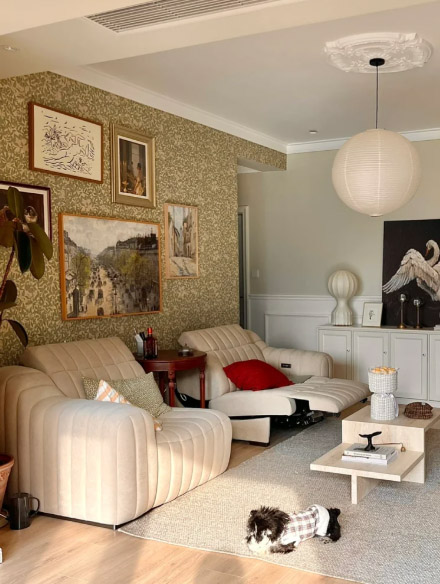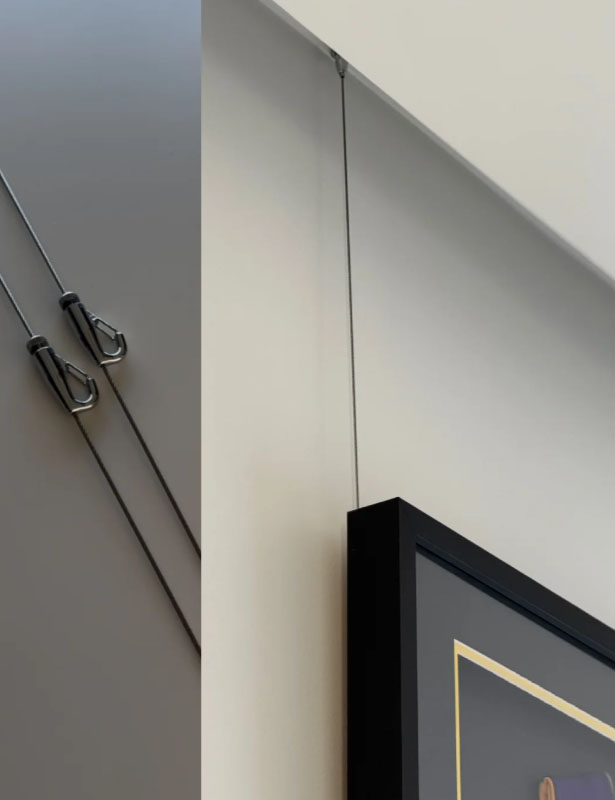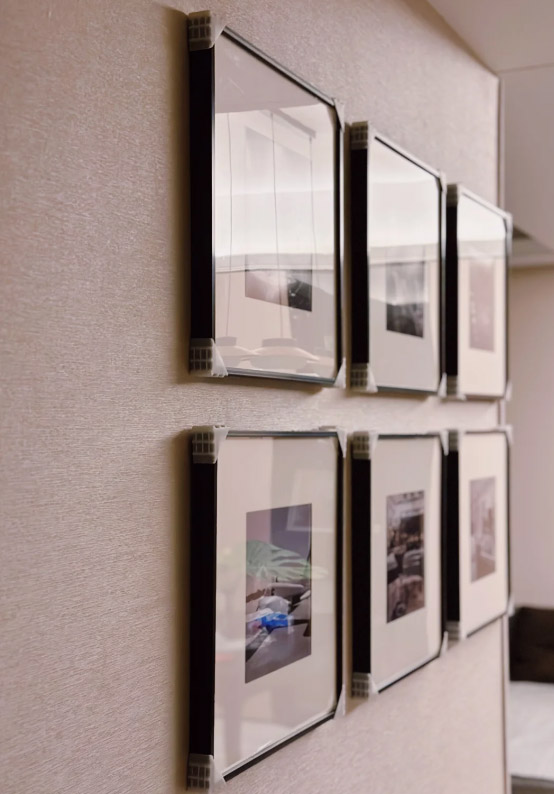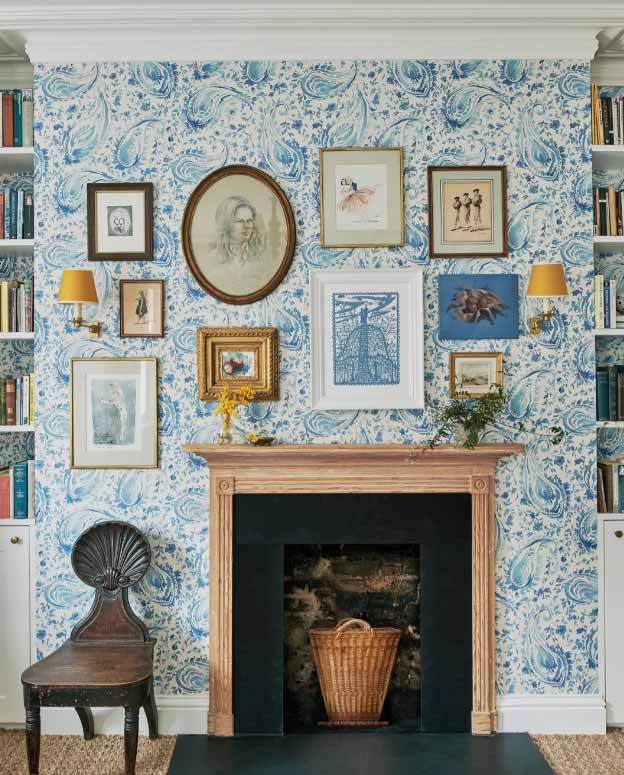The combination of wall art with wallpaper often creates hesitation. Many worry about whether a picture hanged on the wall over wallpaper will clash with the patterns, cause visual chaos, or even damage the wall surface. The truth is that art and wallpaper can coexist beautifully, provided that the process of how to hang wall art is approached with thoughtful planning. This guide expands on the topic and provides a detailed roadmap with both aesthetic and technical considerations.
Wallpaper establishes a visual rhythm in a room. Large-scale patterns introduce bold energy, while subtle textures create calm backdrops. When placing art on top, the artwork becomes either a focal point or a supporting element. Recognizing whether the wallpaper is dominant or secondary is crucial before selecting art.
If wallpaper has complex designs, the chosen artwork should use strong color blocks or bold outlines so it does not get lost. If wallpaper is muted, the art can bring vibrancy and become the centerpiece.
The first principle is balance: wallpaper and art should complement each other rather than compete.
When selecting art, size and style matter. A large wallpaper pattern often works best with equally bold or oversized art. Conversely, small patterns or light textures may pair better with medium-scale works.
Subject matter plays an important role. Figurative paintings or photography with clear subjects stand out against abstract or geometric wallpaper. Minimalist drawings or prints integrate better with quieter backgrounds.
The second principle is proportion: art should respond to wallpaper scale and subject matter to achieve harmony.

Frames create separation between artwork and wallpaper. Simple frames in black, white, or natural wood allow the eye to rest. In contrast, ornate frames can appear overwhelming if paired with busy wallpaper. Wide mats or larger borders around the picture offer breathing room and emphasize the artwork.
Negative space is equally important. Leaving some wallpaper visible around each piece prevents the wall from appearing overcrowded.
The third principle is separation: frames and spacing help the eye distinguish art from background.
Consistent hanging height creates order. Interior professionals such as those featured in Architectural Digest recommend placing the center of the artwork at about 57 inches (145 cm) from the floor, aligning with average eye level. When hanging above furniture, maintain a gap of 6–8 inches above the back of a sofa or console.
For wallpaper with distinct repeating motifs, aligning artwork with the rhythm of the pattern enhances visual flow. For example, centering a frame between two symmetrical elements of wallpaper ensures the arrangement feels intentional.
The fourth principle is alignment: correct height and placement integrate art with the wallpaper’s rhythm.

The question of how to hang pictures on wall without damage is critical, especially with wallpaper. Traditional nails can puncture and weaken wallpaper seams. Safer alternatives include:
The fifth principle is preservation: always consider wall integrity when hanging on wallpaper.
Lighting defines how art interacts with wallpaper. Wall-mounted sconces or track lighting can direct attention toward the artwork, reducing the dominance of wallpaper patterns. Natural light should be filtered with curtains or shades to protect both wallpaper and art from fading.
When using accent lighting, ensure even distribution across the frame. Spotlights placed too close may cast strong shadows, intensifying wallpaper patterns instead of balancing them.
The sixth principle is focus: proper lighting allows art to claim visual priority over wallpaper.

When hanging a gallery wall on wallpaper, careful organization prevents visual clutter. Pieces should share a unifying element, such as consistent frame color or similar subject matter. Symmetrical grids feel formal, while asymmetrical arrangements introduce casual energy.
The wallpaper should function as a canvas that guides grouping. For example, aligning artwork with vertical wallpaper stripes creates natural order, while geometric wallpaper may suit staggered arrangements.
The seventh principle is cohesion: multiple artworks should form a dialogue with both each other and the wallpaper.
Context matters. In living rooms, art over wallpaper often serves as conversation pieces. In bedrooms, quieter compositions create restful atmospheres. Hallways and entryways with patterned wallpaper benefit from bold singular works that immediately catch the eye.
Professional staging in design showrooms frequently demonstrates how artwork shifts atmosphere based on wallpaper style. Observing such spaces provides practical inspiration.
The eighth principle is context: room function influences the selection and display of art on wallpaper.
Traditional homes may already feature picture rails or elaborate wallpapers. In these settings, respecting architectural character while adding art maintains authenticity. Modern interiors with graphic wallpapers pair well with abstract paintings, photography, or mixed media pieces.
Publications like Elle Décor often highlight hybrid solutions: blending mid-century furniture, bold wallpaper, and contemporary art. This mixture proves that layering styles enhances rather than diminishes design.
The ninth principle is adaptability: traditional and modern approaches both benefit from thoughtful layering of art and wallpaper.

Once artwork is installed, regular checks ensure safety and preservation. Frames should be inspected for stability, adhesive products tested for durability, and wallpaper monitored for lifting seams. Avoid hanging art in damp areas where wallpaper may peel, such as poorly ventilated bathrooms.
Protective glass with UV filtration helps safeguard art against fading, while periodic dusting of both wallpaper and frames maintains visual clarity.
The tenth principle is maintenance: preservation extends both the life of art and wallpaper.
Hanging art on wallpaper requires a balance of design awareness and practical methods. Wallpaper enriches space, while artwork adds individuality. By applying principles of balance, proportion, separation, alignment, preservation, focus, cohesion, context, adaptability, and maintenance, both elements can enhance each other rather than compete.
The final principle is harmony: art and wallpaper, thoughtfully combined, elevate a room into a cohesive design statement.
Hi, I’m Philo, a Chinese artist passionate about blending traditional Asian art with contemporary expressions. Through Artphiloso, my artist website, I share my journey and creations—from figurative painting and figure painting to floral oil painting and painting on landscape. You'll also find ideas for home decorating with paint and more.

Yes. Artwork can be hung on wallpaper successfully when balance and proportion are carefully considered. Wallpaper creates a backdrop, while the right art adds a focal point.
Large, bold wallpaper patterns pair best with oversized art, while delicate wallpaper textures complement medium or small pieces.
Select artwork with strong outlines, clear subjects, or solid color fields to stand out. Avoid overly busy pieces that compete with the wallpaper pattern.
For patterned wallpaper, use bold or minimal art to maintain clarity. For subtle wallpaper, introduce colorful or detailed works to create contrast and energy.
Use picture rails, adhesive hooks, or shelves to avoid puncturing wallpaper. Leaning framed art or using freestanding easels are safe alternatives.
Maintain consistency in frame style or subject matter. Align with wallpaper’s lines or motifs for order, or use staggered placement for a more casual effect.
The artwork’s center should be around 57 inches (145 cm) from the floor, or leave 6–8 inches of space above furniture.
